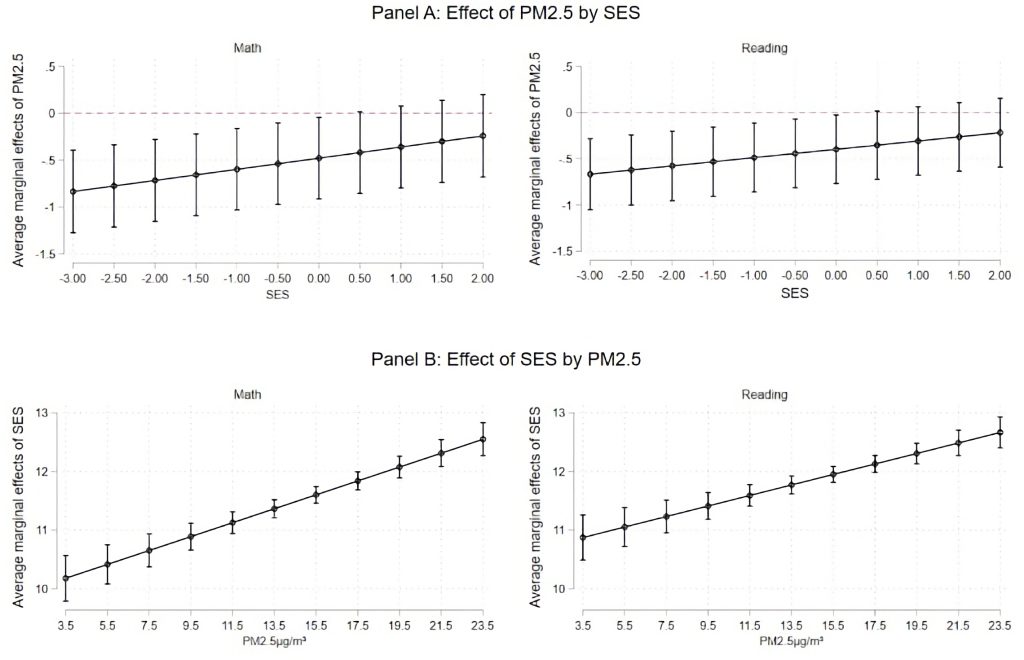A new study by Fabrizio Bernardi (UNED*) and Risto Conte (MPIDR**) revealed a harmful impact of air pollution on academic performance, which was more pronounced among low-SES students. Such differentiated effects among students with different socioeconomic backgrounds could lead to increased disparities in educational outcomes later on.

Although it is well documented that air pollution has negative effects on health, especially among children, and that poor air quality in schools can negatively affect academic performance, there is limited research on how these negative effects affect students from different socioeconomic backgrounds.
Bernardi and Conte addressed this research gap by using a unique dataset that included test scores in maths and reading for a national representative sample of 8th-grade students in Italy in 2019 (INVALSI, 456,508 students, and 6,882 schools) linked to fine-grained measures of particulate matter 2.5 (PM 2.5) from the Atmospheric Composition Analysis Group (ACAG).
The study’s findings indicate that low and high-SES students are equally exposed to poor air quality in schools. However, students attending schools with higher air pollution levels had the lowest test scores, particularly in math. The negative impact on test scores among students in highly polluted schools was as big as the gender gap penalty, and the penalty experienced by children with non-native parents compared to those with native parents.
Finally, the study found that the negative impact of air pollution on test scores was lower among high-SES students, and the differences between low and high-SES students were more prominent in the most air-polluted schools. Since math and reading scores are crucial for later educational transitions, the authors concluded that air pollution in schools contributes to socioeconomic disparities in educational attainment.

Bernardi and Conte, therefore, emphasised the importance of policies aimed at improving air quality, especially in schools, to reduce socioeconomic inequalities in educational achievement.
* National Distance Education University
** Max Planck Institute for Demographic Research
This study is part of Mapineq’s WP3 Educational Inequalities.
Download the study:
https://mapineq.eu/air_pollution_and_educational_inequalities/
Source:
Bernardi, F., & Conte Keivabu, R. (2023). Poor air at school and educational inequalities by family socioeconomic status (WP-2023-014; 0 ed., p. WP-2023-014). Max Planck Institute for Demographic Research. https://doi.org/10.4054/MPIDR-WP-2023-014
Don’t miss out on our upcoming publications! – Subscribe to our newsletter!
